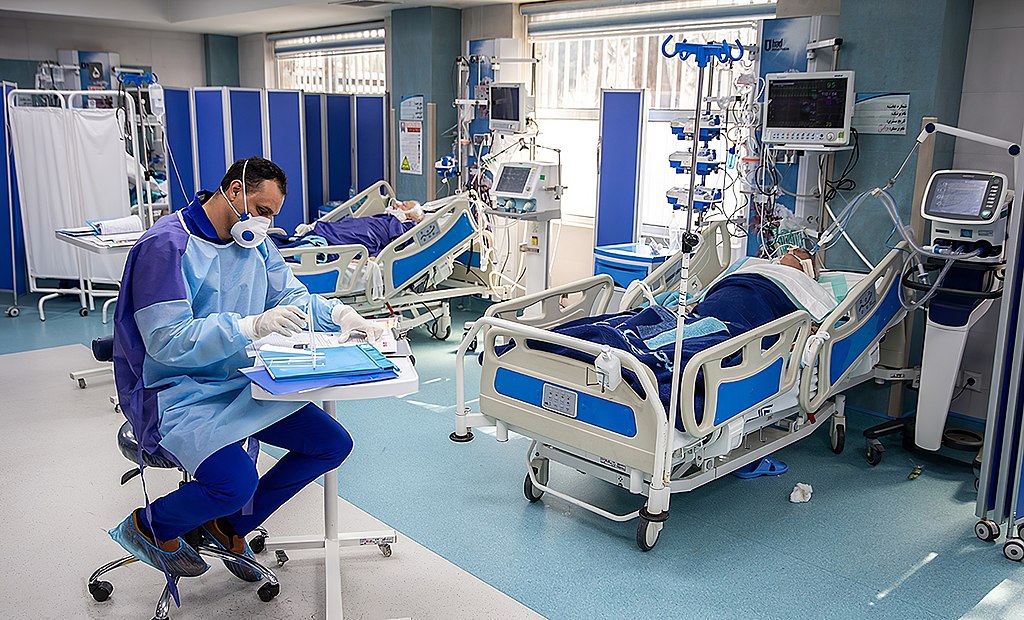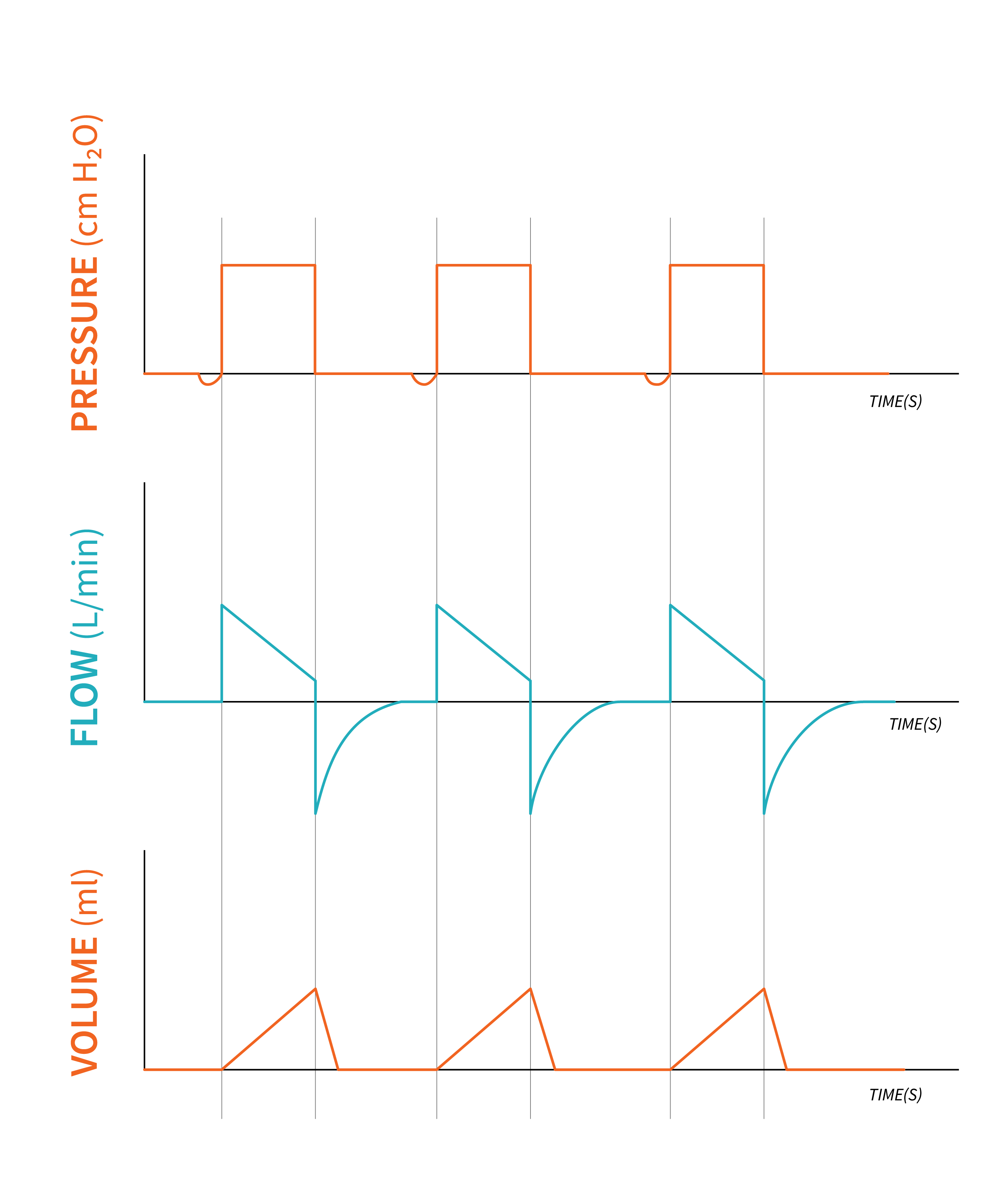6.4 Types of Spontaneous Modes
Just like control modes, there are several spontaneous modes available on the market, but unlike control modes, one has gained more popularity over other, and it is mainly used in current practice. Pressure Support Ventilation (PSV) is by far the most common support mode utilized in critical care. Volume Support Ventilation (VSV) does exist, but it is not often used—most likely due to physiologic variability in volumes being a cornerstone of spontaneous breathing. We will focus on Pressure Support Ventilation as the main spontaneous mode.
We already discussed modes such as Synchronized Intermittent Mandatory Ventilation (SIMV), and Adaptive Support Ventilation, considered “mixed” modes—control and spontaneous.

Pressure Support Ventilation (PSV)
In PSV, every time a patient initiates a breath, the ventilator will push air to reach a set pressure into the patient’s lungs while they spontaneously inhale. The patient plays the only role in deciding how often to breathe and can also vary their volumes based on what they need—for example, if they want to take a long and large breath, they can do this at any point. They can also breathe at a more rapid pace with smaller breaths if desired. The only fixed setting that will not change is the amount of support given to them by the ventilator. They cannot get more than the set “help pressure” unless the clinician comes and changes it.
PSV Basic Settings:
- Pressure Support (PS)
- PEEP (every ventilator, every time)
- FiO2 (every ventilator, every time)
What is NOT set:
- [latex]RR[/latex] (patients must trigger all breaths)
- Flow or I-time (patients can take air in at whatever speed they want and end the breath when they want to. The vent will sense when inspiration and expiration start)
FiO2 and PEEP are set on every ventilator—it is no different in spontaneous modes. In addition, in PSV, the amount of pressure support (PS) is the singular central setting that a clinician must set. The pressure support should be set at an amount that will allow the patient’s work of breathing to remain within normal limits. If they are getting worse, then they are “failing” and may need more support or a change back to a control mode of ventilation.
During pressure support ventilation, each breath will be patient triggered, pressure limited and flow cycled. When we observe the waveforms in pressure support ventilation, notice some similarities with pressure control ventilation. The difference is that every breath in pressure support is patient triggered and the cycle variable is flow, as opposed to time as in pressure control.

Key Takeaway
“Types of Spontaneous Modes” from Basic Principles of Mechanical Ventilation by Melody Bishop, © Sault College is licensed under a Creative Commons Attribution-NonCommercial-ShareAlike 4.0 International License, except where otherwise noted.

